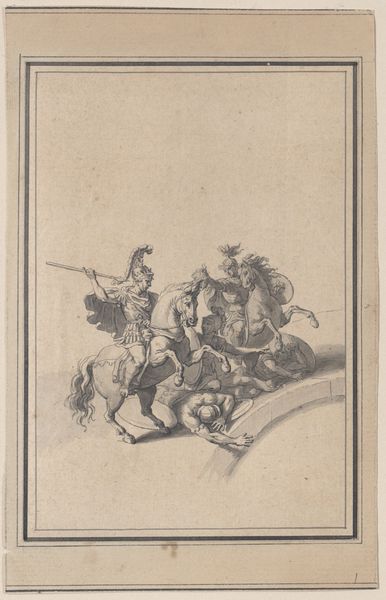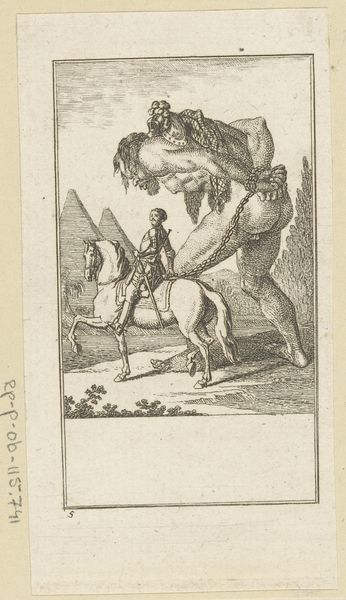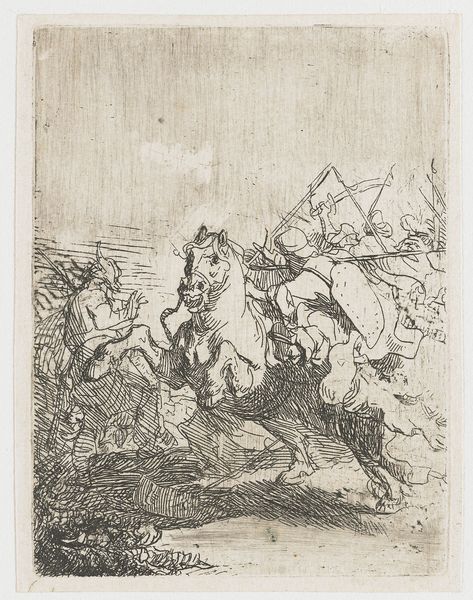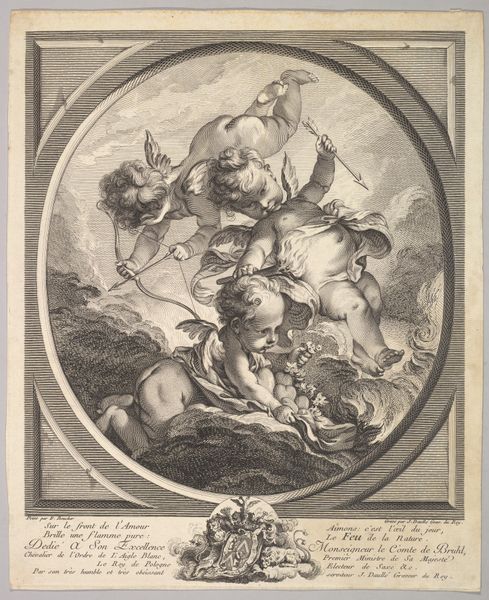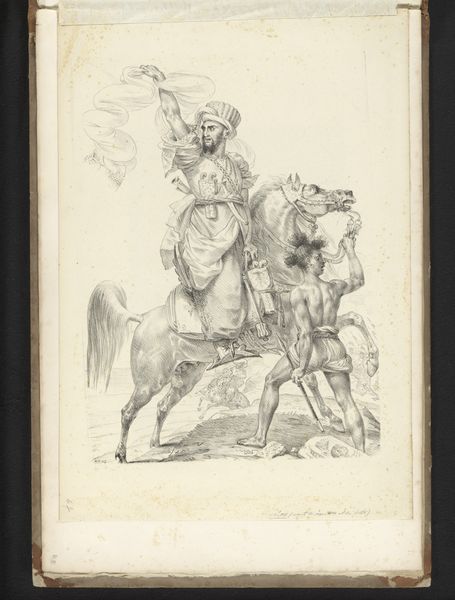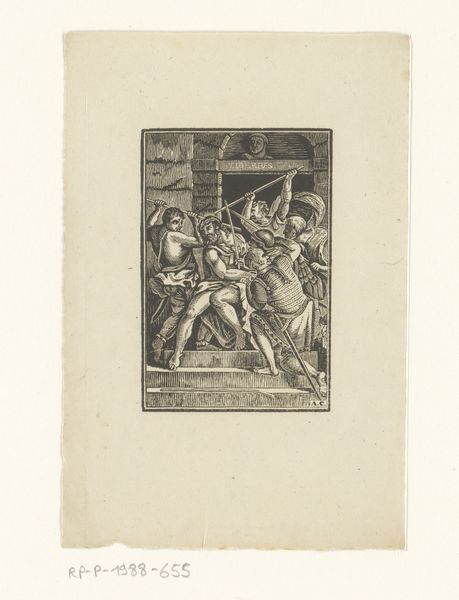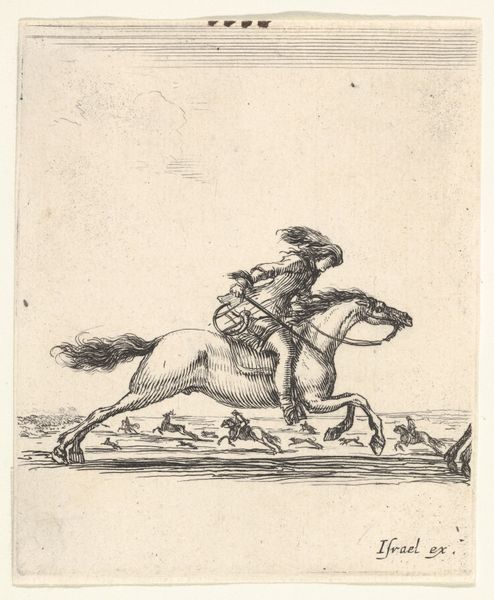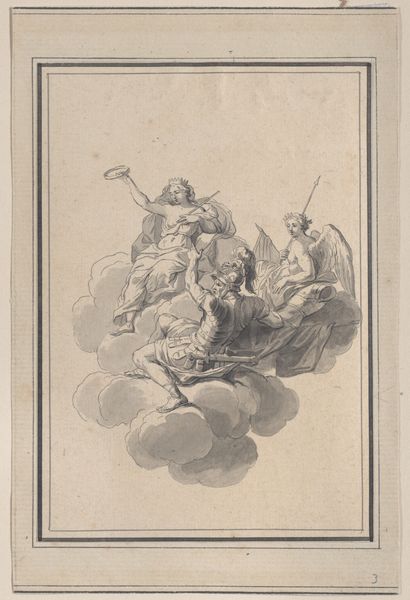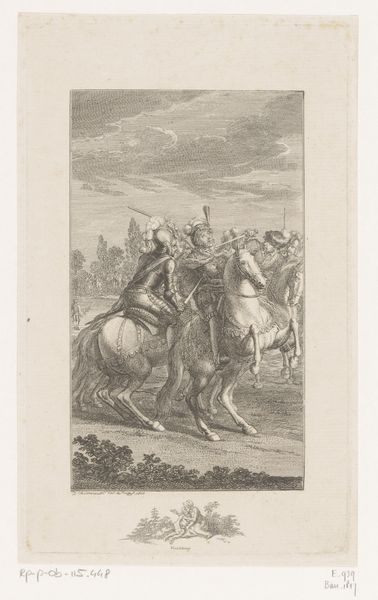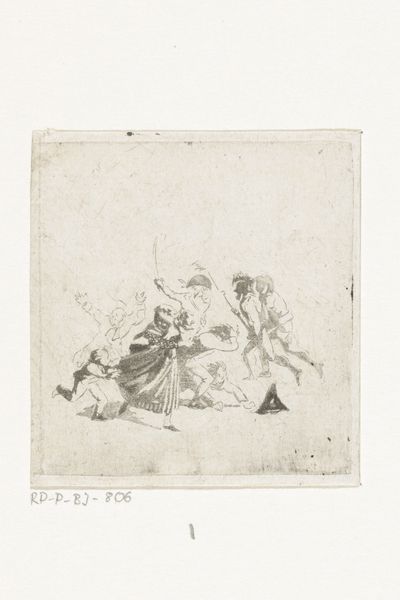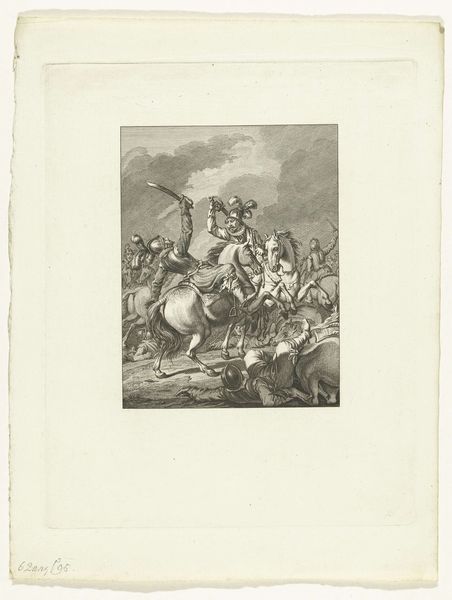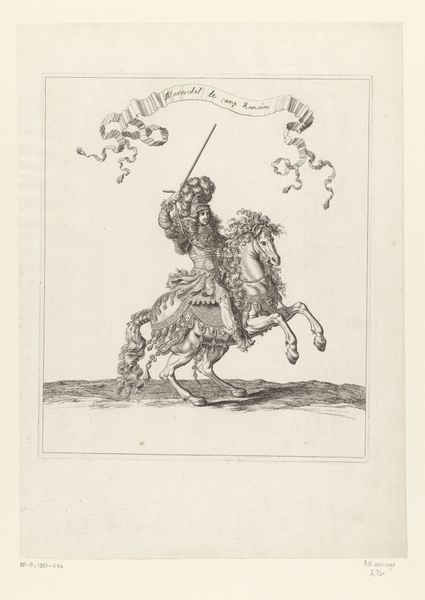
drawing, print, engraving
#
drawing
#
baroque
# print
#
figuration
#
horse
#
history-painting
#
engraving
Dimensions: Sheet: 5 3/8 × 3 3/4 in. (13.7 × 9.5 cm)
Copyright: Public Domain
Editor: Here we have Bernard Picart's "Vignette from the Battle of Milvian," dating from 1700 to 1733. It's an engraving, so a print, and depicts a dramatic battle scene with horses and warriors. There's a lot of energy in the composition, but it feels quite distant somehow. How do you interpret this work, especially given the historical subject matter? Curator: This piece, while seemingly a straightforward historical depiction, speaks volumes about power and its visual representation. Think about the context: early 18th century. Who commissioned works like these, and what narratives did they want to promote? The Battle of Milvian Bridge was a pivotal moment for Constantine and Christianity. This print isn't just about a battle, but about legitimizing a specific ideology through a very theatrical Baroque lens. How do you see the composition reinforcing these ideas? Editor: Well, the elevated perspective makes the viewer feel powerful, like they are overseeing everything, and that victorious horse and rider certainly occupy a dominant space in the picture plane. But what about the fact that this is a print, a multiple? How does that change the meaning? Curator: Precisely! The reproducibility of the print is key. It democratizes the image to an extent, allowing for a wider dissemination of this particular interpretation of history and its religious undertones. The Baroque style—the dynamism, the emotion—functions almost as propaganda. Consider how the “winners” get to write, and in this case, visually represent history, solidifying their position through art. What untold stories are left out? Editor: That's a good point; I hadn't considered it from the perspective of whose story is being told, and, crucially, *how* that story is being crafted for consumption. Thank you! Curator: And thank you! Reflecting on these power dynamics makes us more critical viewers of art and history.
Comments
No comments
Be the first to comment and join the conversation on the ultimate creative platform.
